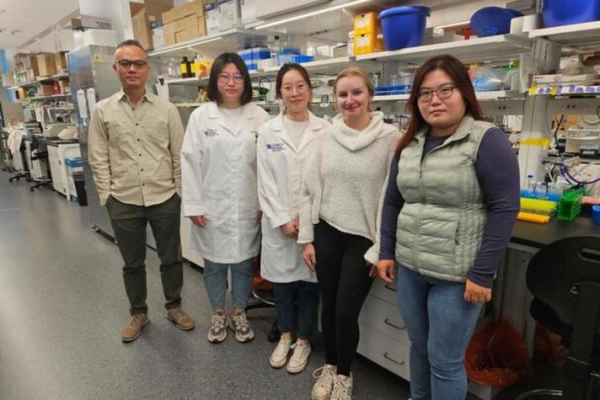Bridging the gap: UK graduate student uses knitted e-textiles to meet accessibility needs

Drawing inspiration from all around her, University of Kentucky College of Design graduate student Faezah Panahandeh is working to bridge the accessibility gap through design.
Panahandeh, who already holds a master’s degree in Iranian architectural studies, is pursuing a second master’s in interior design. She applied for a College of Design Graduate Research Fellowship to focus on developing sensory adaptive e-textiles that respond to their surrounding environment.
Panahandeh said she felt compelled to pursue a project centered on meeting the sensory needs of those with disabilities after watching a documentary in class.
Neuroarchitecture research shows how touch, temperature and sound affect how people feel and perceive spaces. Panahandeh found that traditional interior materials are often static and rigid, especially if they are electronic like LED screens and panels.
Instead, she explored a more dynamic material. Her end product: A handheld sensory material that responds to being stretched, lighting up as the user extends the object.
As part of the process over the summer, Panahandeh tested 20 different types of conductive yarn to see which would be the best fit for her final prototype, including fishing wire and materials from Shield X.
She worked closely with her faculty mentor Jennifer Meakins, an assistant professor in the School of Interiors, who also works in the SoftLab — a soft goods-focused research lab exploring new materials. Meakins has previously worked on developing e-textiles and making them on a larger scale with a digital knitting machine in the SoftLab. The two have worked on previous e-textile research projects together.
Knitting the yarn into an i-cord — basically a knitted tube — Panahandeh wanted to hide the electrical wiring the product requires, creating a much more approachable sensory tool.
“Our aim is that it could be just used easily through stretching,” Panahandeh said. “Just hiding the complex process of conductivity and working with electricity behind or inside the material.”
To do this, Panahandeh had to learn how to knit by hand, as well as learn how to use the digital knitting machine to design a pocket for light batteries and other wires.
“Knitting is using stitches, and through those stitches, you can knit different kinds of material as threads and bring new qualities to your final piece,” Panahandeh said.
Panahandeh’s previous experience with lighting from a class she took last semester also aided her throughout the research journey.
“In that course, I worked with acrylics and creating light,” Panahandeh said. “Because of that, I thought maybe it could be interesting.”
Her interest in lighting stuck out to her after researching autism and sensory needs. She learned that visual and tactile stimulation can be helpful to autistic people.
For her prototype, Panahandeh planned to use something as stretchable as a Slinky. While the toy would be a small-scale application of her design, it could be expanded.
“In a larger scale, this design could be applied as lighting as well — hung from ceiling or even something that is attached to the wall.”
Spending many of her working days in a design lab, Panahandeh hopes to bring more life to this sensory tool, as she plans to have more people test her prototypes.
Despite this research fellowship only lasting over the summer, Panahandeh made clear that she still wants to pursue the project, not only to advance her product but also to conduct the most meaningful and useful research possible.


